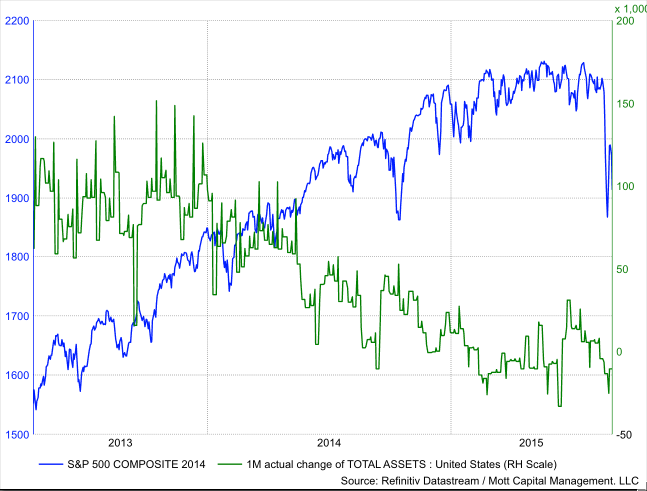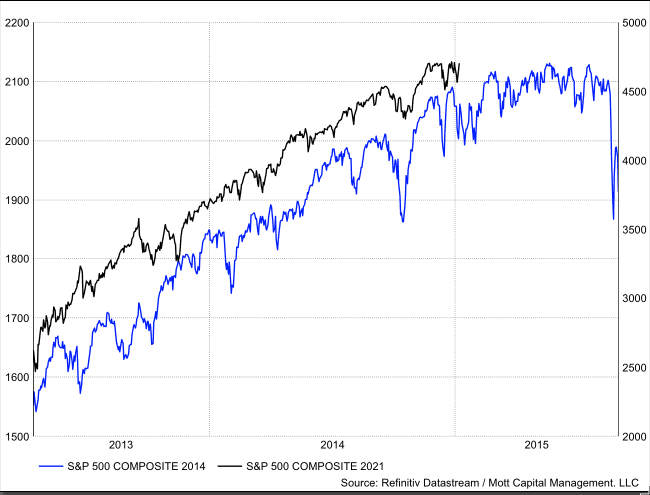This article was written exclusively for Investing.com
Since the middle of November, stocks have been very volatile, with many wild price swings. Sharp selloffs followed by sudden and dramatic rallies. The equity market seems to be in the middle of a massive change in trend, with a very different feeling than the persistent run higher we have grown to know over the past 20 months.
Another period that witnessed similar wild price swings while also going nowhere was at the end of 2014 and 2015. That time and this period have a lot in common, with the Fed ending Quantitative Easing. While the Fed has not completed QE yet in 2021, it is expected to do so very early in 2022. The only difference is that the QE is much more prominent this time and will be unwound much quicker.
A Big Transition
This sea change will likely lead to a lot bigger price swings as the market transitions away from easy financial conditions, massive amounts of liquidity, and easy access to margin. To one with less liquidity and tighter financial conditions. This is what happened at the end of the last QE cycle, and it is likely to repeat itself in some form this time.
The S&P 500 of today and 2013 to 2015 had a reasonably easy grind higher with very little volatility, until the fall of 2014. That was around the time the S&P experienced its first significant bout of volatility, ahead of the conclusion of QE at the end of October 2014.

Expecting More Wild Price Swings
Eventually, that led to a stock market that was not only volatile with huge price swings, but it also led to a market that traded sideways for a very long time. This time it seems the market is starting to see that same transition phase developing and tracking a similar path, in terms of the rising volatility that comes with the end of QE. The only difference this time around is that QE will be ending much quicker. In December 2013, the Fed announced it would scale back its QE program, and it concluded in October 2014. This QE cycle will be scaled down in nearly half the time.

It probably means that we can expect to see a lot of volatility in the market as it experiences this change in Fed monetary policy, similar to what was seen in the transition in 2015. This means it is unlikely that the S&P 500 will see much higher levels and will also experience more periods of turbulence with big drops followed by very sharp snap-back rallies. Each experience will leave the bulls and the bears feeling like they have gained the upper hand while leading to much frustration.
As the Fed continues to unwind QE and speeds up the taper, it seems highly likely that the backdrop for stocks will become less smooth and more volatile as many of the easy conditions that QE helps foster end. If it plays out the same way as the last time, then volatility will likely remain very high, leading to a market that goes nowhere and eventually lower.
